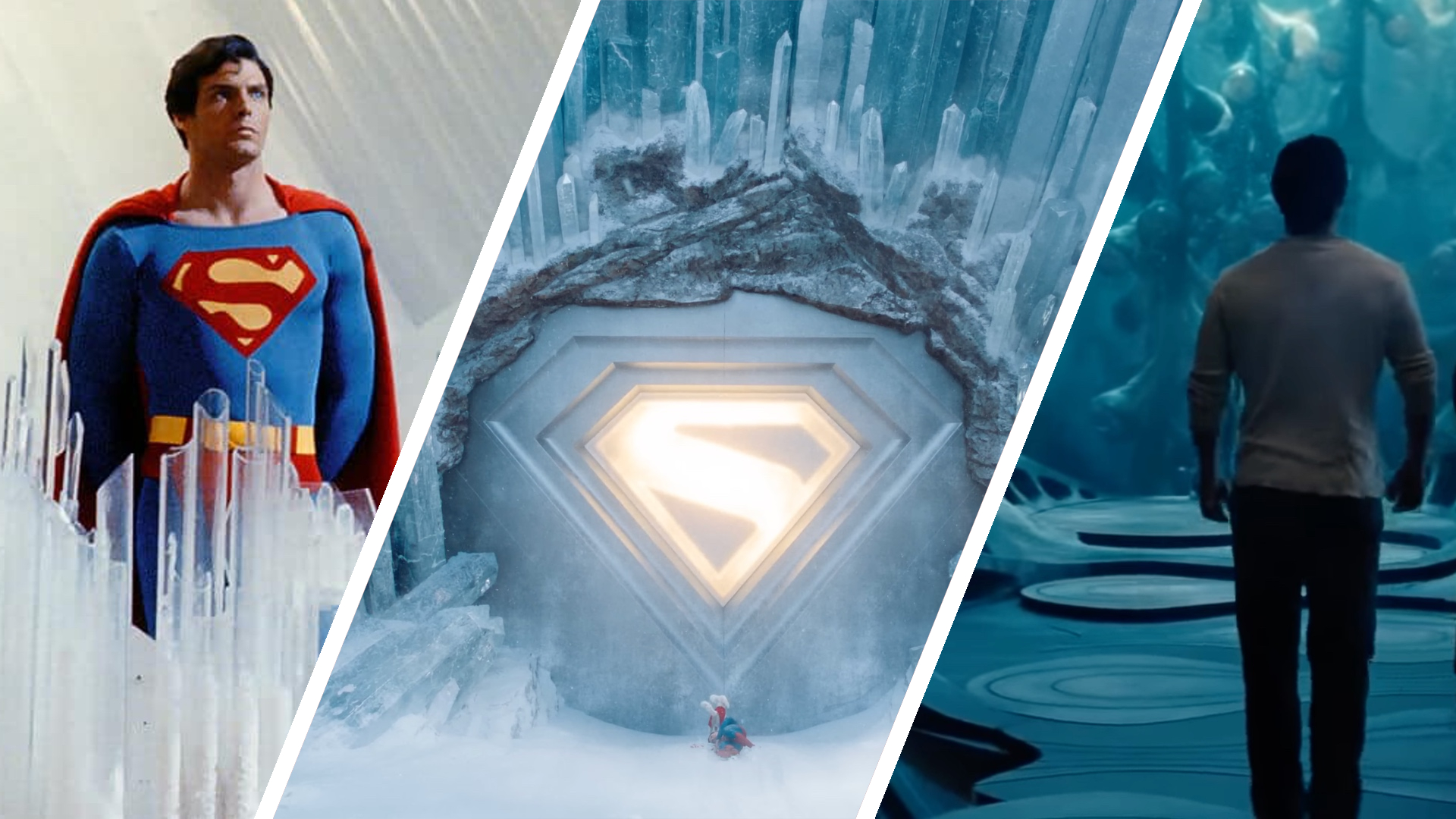Exploring Superman’s Fortress of Solitude Through the Ages

The Fortress of Solitude, Superman’s iconic ice sanctuary, has been an integral part of the superhero’s lore since its introduction in the mid-1940s. First known as “Superman’s Citadel,” it evolved into the distinctive Arctic structure recognized today, serving as a refuge, a memorial to his parents, and a hub of knowledge about the universe and his home planet, Krypton. As James Gunn’s latest film, simply titled Superman, releases in theaters worldwide today, a look back at every live-action depiction of this critical location reveals its significance in the Superman narrative.
From Cinema to Television: The Evolution of the Fortress
In 1978, Christopher Reeve brought Superman to life in “Superman: The Movie.” This film introduced audiences to the Fortress, showcasing how a young Clark Kent discovers a green crystal that magically raises the citadel from the Arctic ice. Inside, he encounters a holographic representation of his father, Jor-El, who imparts the history of Krypton and guides him toward becoming the Man of Steel. The film’s enduring quality, despite some dated special effects, has solidified its place in cinematic history.
The Fortress plays an even larger role in the 1980 sequel, “Superman II,” where it serves as the backdrop for pivotal moments, including Clark’s connection with Lois Lane and his confrontation with General Zod. These films laid the groundwork for how the Fortress would be perceived in future adaptations, blending emotional depth with superhero action.
In the 1990s, the television series “Lois and Clark: The New Adventures of Superman” reimagined the narrative, starring Dean Cain and Teri Hatcher. While this iteration omitted a physical Fortress, it introduced a globe containing Kryptonian knowledge, cleverly dubbed the Fortress of Solitude when revealing its resting place in Clark’s childhood treehouse.
Modern Interpretations of Superman’s Sanctuary
The early 2000s brought “Smallville,” where Tom Welling portrayed a teenage Clark Kent grappling with his identity. The Fortress made its debut in the Season 5 premiere, “Arrival,” echoing earlier cinematic representations while establishing its own identity. This version, featuring Terence Stamp as a holographic Jor-El, became a central narrative device, guiding Clark toward his destiny.
In 2006, “Superman Returns,” directed by Brian Singer, served as a sequel to the earlier films, yet the Fortress felt less innovative, lacking the depth of its predecessors. Despite its limited appearance, it retained familiar elements such as the iconic crystals and the icy aesthetic.
The 2013 film “Man of Steel,” directed by Zack Snyder, marked a significant departure from the established Fortress design. Here, Clark’s ship, rather than a traditional ice palace, becomes the focal point, with a holographic Jor-El guiding him through his journey. This iteration embraced a darker, more contemporary visual style, reflecting a shift in the broader DC Extended Universe.
In the television series “Supergirl” (2015-2021), the Fortress returned in a limited capacity, yet made an impact with its larger, more advanced design, offering a space for Supergirl to connect with her Kryptonian heritage. Meanwhile, the short-lived series “Krypton” (2018-2019) explored the origins of the Fortress, revealing it as a secret science base created by Zor-El, Jor-El’s grandfather.
The latest adaptation, “Superman and Lois,” which premiered in 2021, has been praised for its nuanced portrayal of the characters and their relationships. Tyler Hoechlin’s Superman navigates both heroism and family life, with the Fortress serving as a vital backdrop for critical moments, including his proposal to Lois Lane.
As audiences await the release of James Gunn‘s new film, set in 2025, early glimpses suggest a return to the grand scale of the Fortress, complete with vibrant visuals and a renewed sense of hope. This portrayal aims to reclaim the essence of the Fortress as a symbol of Superman’s enduring legacy.
The Fortress of Solitude has transcended its role as merely a hideout; it reflects the evolution of Superman’s character across different media. Each iteration, from the classic films to modern adaptations, contributes to a rich tapestry that continues to resonate with fans and newcomers alike. As the latest film hits theaters, it remains to be seen how this new version of the Fortress will shape the future of Superman’s story.






